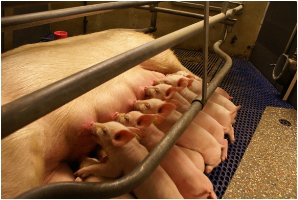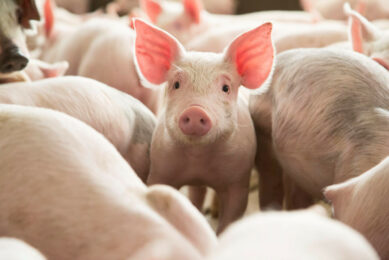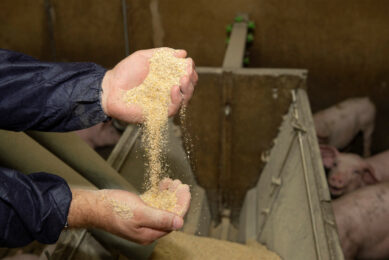Mycotoxins: Hidden threat to newborn piglets

Mycotoxins can cause illness and mortality in young animals fed mouldy feedstuffs. Acute intoxications can have devastating effects and are difficult to diagnose and treat instantly because the suspicious feed may be consumed before it can be tested.
By Radka Borutova, Business development manager, Nutriad International (Belgium), r.borutova@nutriad.com, www.nutriad.com.
Because of the large number of structurally unrelated mycotoxins produced by the various fungi, it is difficult to pinpoint which toxin(s) is responsible for a particular outbreak, even if a mycotoxicosis is strongly suspected. The economic impact of lowered productivity, decreased weight gain and feed efficiency, increased disease incidence because of immune system suppression, subtle damage to vital body organs, and interferences with future reproduction ability is many times greater than that of immediate morbidity and mortality.
Little is known about the effect on offspring of providing zearalenone-contaminated feed to lactating sows. Piglet mortality during the first two weeks after birth has been shown to be higher among sows that received feed with zearalenone during gestation and lactation. It is thought that zearalenone or its metabolites (α- and β-zearalenone) affect the piglets via the sow’s milk. The feeding of contaminated feed containing DON to piglets as well as decreasing feed intake, can influence the immune system (cellular and humoral), cause metabolic disturbances in liver and spleen mainly due to inhibition of RNA, DNA and protein synthesis.
Piglets are highly susceptible to aflatoxins. Aflatoxins bind to the nuclear DNA, thus preventing the production of RNA, enzymes and other proteins. Metabolite – aflatoxin M1 binds to the endoplasmatic reticulum and macromolecules, which explains its carcinogenic effect. Aflatoxin M1 can be present in the sow’s milk. Piglets exposed to such contaminated milk have shown damaged lymphocytes and macrophages indicating a loss of immune-competence. Pulmonary edema was observed in piglets from sows fed fumonisins contaminated feed where milk was the most important transfer route.
There are two practical ways to combat mycotoxin problem:
- the contaminated feed should be replaced with mycotoxin-free feed, or
- a mycotoxins-deactivating agent should be added in the existing feed of mother and her offspring.
Such a product should be not only safe and effective, but it should contain only components permitted by legislation.
Only accurate feeding in combination with continuous and effective mycotoxin management offer the keys to maintaining optimal health and improving the future performance of young piglets affected by mycotoxins.












